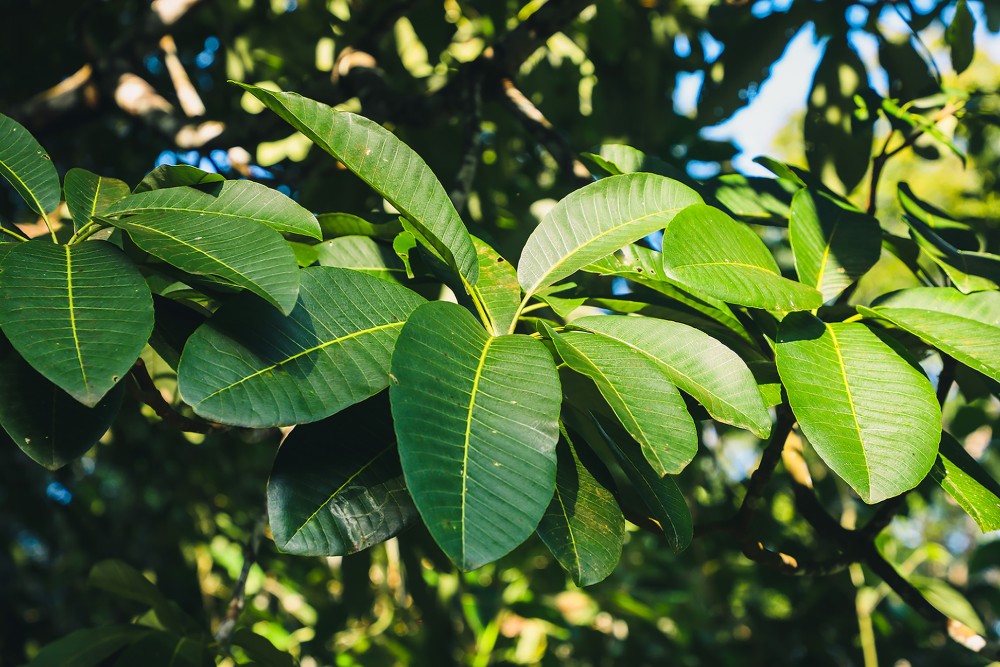No Data Found
Dyera costulata
Jelutong, Jelutung
![]() Intermediate Sensitivity
Intermediate Sensitivity
| Species Name | Dyera costulata |
|---|---|
| Common Name | Jelutong, Jelutung |
| Family | Apocynaceae |
| Genus | Dyera |
| Taxonomic Synonyms/Past Names | |
| Taxonomic Notes |
Agree with the details?
Login to Vote Now
Species Information
- Large deciduous forest tree over 60-80 m tall in the wild, although shorter when planted at the roadside or as a park tree and with a diameter of 250 cm. Leaves are simple, arranged in whorls at the top of the ultimate twigs. Flowers white, yellowish-green or pinkish-yellow, about 3.5 mm across, arranged in whorls on 4-18 cm long flowering shoots. Fruits are brown follicles, 18-40 by 2.5-4 cm.
- Distributed in peninsular Thailand, Peninsular Malaysia, Singapore, Sumatra, and Borneo
- Primary lowland or hill forests, well-drained soil. Usually occur as scattered individuals.
- Up to 300 m altitude
No Data Found
No Data Found
No Data Found
No Data Found
No Data Found
No Data Found
No Data Found
No Data Found
No Data Found
No Data Found
No Data Found
No Data Found
No Data Found
- Produces white latex, sap [1]
No Data Found
No Data Found
No Data Found
No Data Found
- Its fruits are brown follicles 18-40 by 2.5-4 cm. [1]
No Data Found
No Data Found
No Data Found
No Data Found
No Data Found
No Data Found
No Data Found
No Data Found
No Data Found
No Data Found
- Able to tolerate CO and NO2/Nox
No Data Found
No Data Found
No Data Found
No Data Found
No Data Found
No Data Found
No Data Found
No Data Found
- It sequesters heavy metal contamination [1]
No Data Found
No Data Found
No Data Found
No Data Found
- pH of 6.2-7.0 [1]
No Data Found
No Data Found
No Data Found
No Data Found
- Occurs in primary evergreen lowland or hill forests up to 300 m. [1]
No Data Found
No Data Found
No Data Found
No Data Found
No Data Found
No Data Found
No Data Found
No Data Found
No Data Found
- It may be able to adapt to higher temperatures. [1]
No Data Found
No Data Found
No Data Found
No Data Found
- Prefers well-drained soil. [1]
No Data Found
No Data Found
No Data Found
No Data Found
No Data Found
- Specimens observed in Singapore were wind tolerant.
No Data Found
No Data Found
No Data Found
No Data Found
No Data Found
No Data Found
No Data Found
No Data Found
No Data Found
No Data Found
No Data Found
No Data Found
No Data Found
No Data Found
-
Insufficient Data
No Data Found
No Data Found
No Data Found
No Data Found
- Increases landscape connectivity for urban wildlife [1]
- Jelutong, a suburb of George Town in Penang, Malaysia, is named after this tree. Has medicinal properties and is used to make products, such as matches and pencils. The latex is an ingredient in chewing gum.
No Data Found
No Data Found
No Data Found
- Jelutong, a suburb of George Town in Penang, Malaysia, is named after this tree. Has medicinal properties and is used to make products, such as matches and pencils. The latex is an ingredient in chewing gum. [1]
Contributors: anonymous
Last Updated: 2023-03-15


No comments